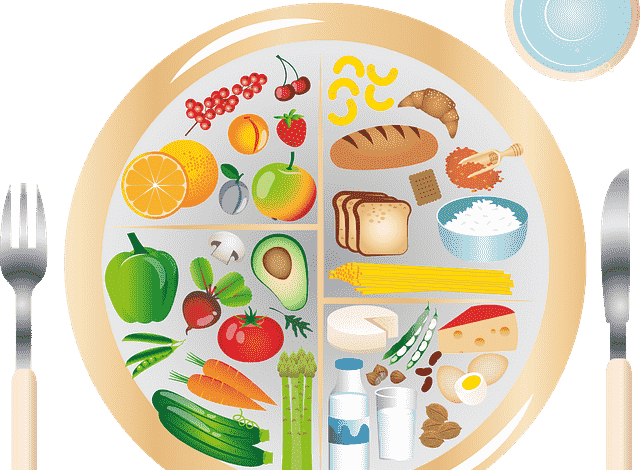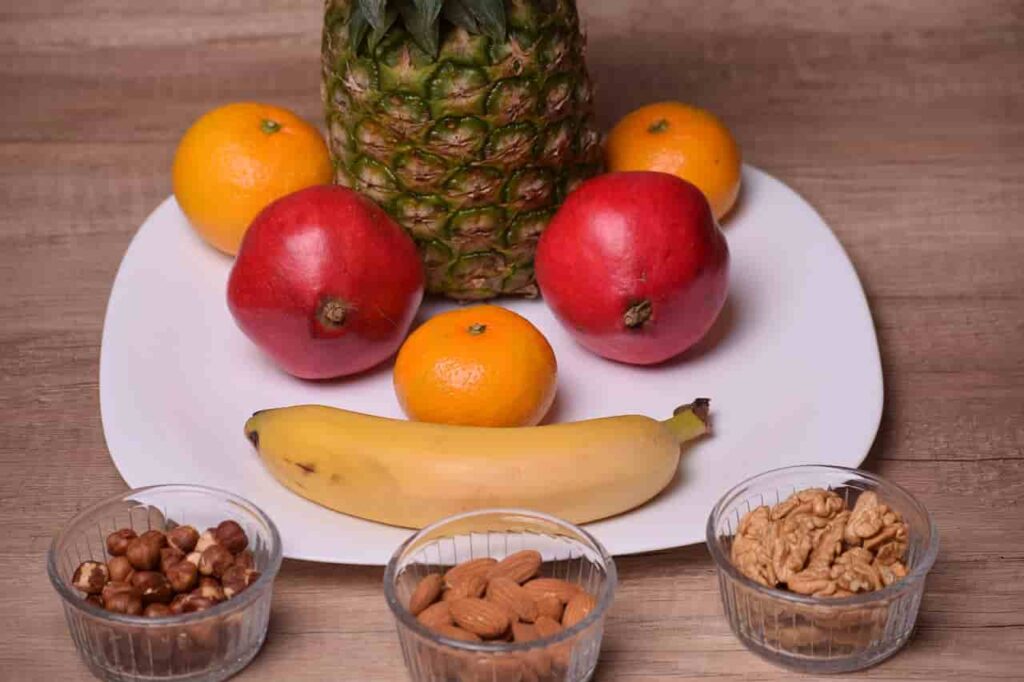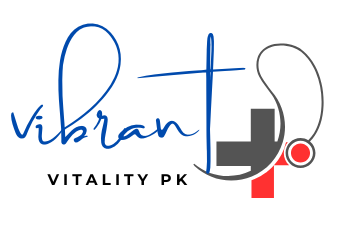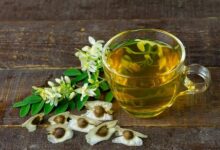FROM FOOD PYRAMID TO MY PLATE: AN EVOLUTION OF NUTRITIONAL GUIDELINES ALONG WITH 10 HEALTHY TIPS
My Plate

INTRODUCTION
My plate is used to grab consumer’s attention a little bit more and be a good daily reminder for healthy eating. My plate concept facilitates in selection of nutritious food items in your diet plan in right proportion and in best quantity for better health & fitness.
My plate concept is an easier way to visualize how to create a healthy meal and all of the components that are involved in a healthy meal.

By following my plate guidelines you will feel better have more energy and help reduce your risk of nutrition related health problems later in life. The first initiative towards healthy eating was food pyramid model which was developed in 1992. Owing to certain limitations the said concept didn’t get true popularity however my plate concept filled the gap adequately and provide best food choices in an individual’s daily food intakes.
What did the stripes mean and why were some stripes wider than others, the my plate icon is easier to follow with my plate you can visualize that you should make half your plate fruits and vegetables a quarter grains a quarter protein and dairy.
10 TIPS ABOUT MY PLATE
- My plate should have balanced proportions and avoid oversized portions
- Eat fruits vegetables
- Avoid excessive sugars
- Switch to fat free or low fat milk
- Make half your grains whole grains
- Eat less solid fats
- Avoid excessive salts in food
- Drink water instead of sugary drinks
- Avoid trans fats
- Take egg, meat, fish for protein intake
The plate concept of nutrition entails all the essential food items from different food groups which are as follows:
FRUITS
When looking at the types of fruits to consume fresh and frozen are typically going to be the best. But make sure to eat your fruit and not drink it so even if it says a hundred percent fruit juice there still is liquid sugar in there which can spike our blood sugars and not stick with us very long.
Some commonly eaten fruits are apples, bananas, cherries, peaches and pears. The berry group includes strawberries, blueberries and raspberries. Melons include cantaloupe, honeydew and watermelon.
The juices of fruits are also healthy and nutritious. The juices of apples, grapes, grapefruits and oranges are considered really healthy.
VEGETABLES
When taking a look at your vegetables, we’re focusing more specifically on the non starchy vegetables. So think about leafy greens, broccoli, green peppers, green beans preferably fresh or frozen if we are consuming canned it would be a good idea to rinse your canned vegetables and get rid of any of that excess sodium. Always remember that the darker colored vegetables carry more nutrition in shape of vitamins and minerals.
Some commonly eaten vegetables in each subgroup are dark green vegetables such as broccoli, spinach, Brussels and sprouts. Red and orange vegetables include carrots pumpkin, red peppers, sweet potatoes and tomatoes. Beans and peas include black beans, kidney beans, lentils, soy beans and split peas. Starchy vegetables can include corn green peas, plantains and potatoes. Other vegetables such as artichokes, asparagus, avocado, eggplant, onions and cucumbers.
PROTEINS
When looking at the protein food group you want to try to aim for lean proteins. An example of a plant-based protein would be our legumes, lentils or you know different beans if we make a chili that are a good protein rich meal. Eggs are another great source of protein as well as meats, fish, chicken and other poultry are going to be your leaner proteins.
Select a variety of protein foods to get as many health benefits as possible. Vegetarian options in the protein foods group include beans and peas, processed soy products, nuts and seeds.
When choosing protein foods keep your portion small and lean portion sizes should be three or four ounces cooked which is about the size of the palm of your hand. All foods made from meat, chicken, turkey ,seafood or fish beans and peas eggs processed soy products nuts and seeds are considered part of the protein foods group.
Processed meats such as ham sausage and deli meats can have a lot of added sodium. Always check the nutrition facts label on packages to help cut back , select fish that is rich in omega-3 fatty acids. The omega-3 fats are good for your skin, your blood, your muscles and your brain. fish with omega-3s include salmon, tuna, pacific oysters and mackerel.
GRAINS
When consuming grains you want to try to make half of those grains, whole grains. So, a whole wheat bread for example you want the food label to say a hundred percent whole wheat. When looking at your ingredient list you want one of the first two ingredients to say whole wheat. Flour typically a whole grain has about 3 grams of fiber per serving so you will also see that on the food label.
Refined grains are missing the bran and germ. Whole grains are any food made from wheat, rice, oats, and corn grain. Cereal is a grain product examples of grains are Bread, pasta, oatmeal, Cereals, crackers and rice.
Grains are divided into two groups whole grains and refined grains. A hundred percent whole grains contain the entire grain kernel. They are the most nutritious grain choices and add essential fiber to our diet.
My plate recommends that 50 of our grains be whole grain examples include whole wheat flour whole wheat pasta, rolled oats, quinoa, brown rice and popcorn.
Fiber, iron and many b vitamins are some examples of refined grain products. Moreover, white flour, breads, white rice, cookies and saltine crackers, cake and pie are refined grains.
DAIRY
When consuming dairy try and aim for low-fat dairy so that would be 1% or skim. Keep in mind that the plant-based milks and other dairy products such as almond milk or soy milk are also going to be appropriate choices for dairy. They are going to be fortified with calcium and vitamin D and so they will count as a dairy serving.
Dairy foods can provide vitamin d, potassium and phosphorus in addition to calcium. Switch to fat free or low fat one percent milk foods included in the dairy group are milk yogurt and cheese.
All milk and many foods made from milk are considered part of this food group. Dairy group choices should be fat free or low fat. Foods from this group provide vitamin d potassium and phosphorus however foods made from milk that have little to no calcium such as cream, cheese cream and butter are not included.
If you choose milk that is not fat free or cheese that is not low fat then the fat in the product count towards the empty calories category. If sweetened products are chosen the added sugars also count towards your empty calories category. If you are lactose intolerant you may still find lactose free or lower lactose products available.
FATS
It’s important to talk about our fats and oils even though they’re not a food group on my plate they are still essential especially for growing children healthy fats are important for brain development and growth aim more towards the plant-based oils which are going to be from your olive oils avocados provide healthy fats and are nuts.
WATER
When you are thirsty water is an excellent choice to drink. It provides the fluid your body needs to keep you cool, it helps your body dispose of waste and helps circulate nutrients throughout your body.
The general tip is to drink eight ounce servings of water each day. Be sure to have water available when outdoors or doing other physical activity. Drinking of adequate quantity of water helps in avoiding dehydration.
Flavored waters or vitamin waters and sports drinks usually have added sweeteners and artificial ingredients, the added sweeteners in these drinks add calories. Be sure to read the nutrition facts label and ingredients on these beverages.
Many of the foods and beverages people eat and drink contain empty calories. Foods containing high amounts of solid fats and added sugars add calories to the food but few or no nutrients.
The foods and beverages that provide the emptiest calories include cakes, cookies pastries and donuts. Sodas, energy drinks, sport drinks and fruit drinks.
Cheese pizza chips and french fries, ice cream sausages, bacon and ribs many of these products contain both solid fat and added sugars, you can find ways to cut the fat in added sugars by looking for lower fat versions of these products. You can choose water, milk or sugar-free beverages instead of drinks with sugars.
CONCLUSION
My Plate nutrition concept serves as a valuable and practical guide for individuals seeking to make informed and balanced dietary choices. Its simplicity and visual representation make it accessible to people of all ages, promoting healthier eating habits and improved overall well-being. By emphasizing the importance of incorporating a variety of food groups in appropriate proportions, My Plate encourages us to prioritize our health while enjoying a diverse and flavorful diet. As we continue to strive for healthier lifestyles, My Plate remains a trusted tool that empowers us to nourish our bodies, reduce the risk of chronic diseases, and ultimately lead happier, more vibrant lives through the power of mindful nutrition.
FAQs
What is My Plate?
My plate is used to grab consumer’s attention a little bit more and be a good daily reminder for healthy eating. My plate concept facilitates in selection of nutritious food items in your diet plan in right proportion and in best quantity for better health & fitness.
What is difference between my plate and food pyramid?
Food pyramid is developed in 1992 but due to certain limitations it didnt get ample attention however those gaps successfully covered in my plate concept. My plate is widely accepted concept now.
What are basic ingredients of my plate?
1. Fruits
2. Vegetables
3. Proteins
4. Grains
5. Fats
6. Water






